Raising Silkie chickens offers a delightful venture into poultry farming. With their unique appearance and gentle disposition, Silkies make for charming additions to any flock. This guide covers essential aspects, from selecting the right breed varieties to ensuring optimal egg production.
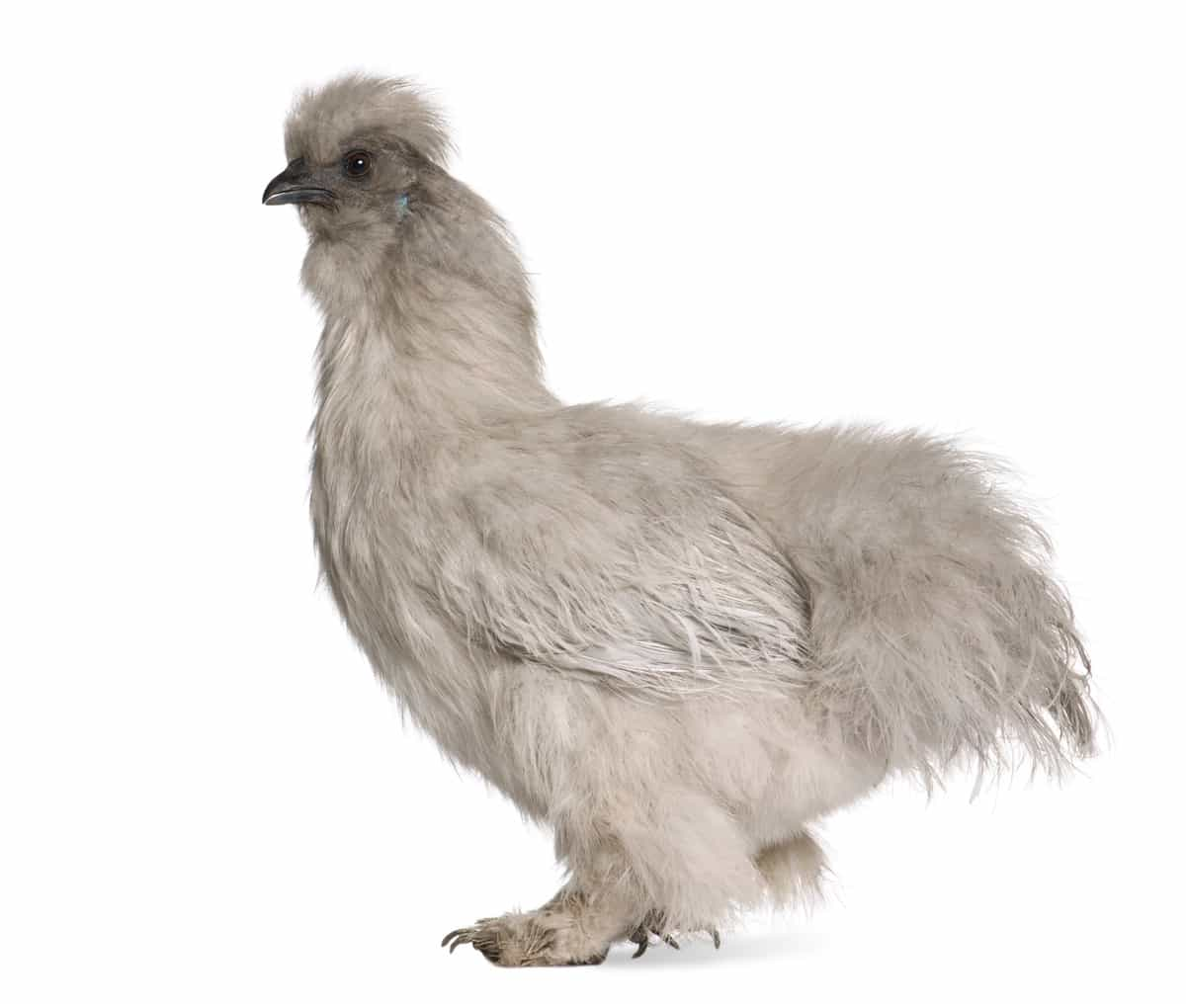
Learn about dietary needs, coop design, and health tips for these fluffy wonders. Explore grooming techniques, seasonal care, and integration with other breeds. With proper attention to nutrition, hygiene, and preventive measures, you can enjoy the company of Silkies for their entire lifespan, relishing in their organic eggs and occasional meat harvests.
Silkie Chicken Farming
Introduction to Silkie Chickens
Silkie chickens, originating from ancient China, are renowned for their fluffy plumage and friendly demeanor. These unique birds captivate with their black skin, feathered legs, and distinct blue earlobes. Despite their small size, they boast a calm temperament, making them ideal pets for families and hobbyists alike. They weigh between 1.5 to 3 pounds and have a lifespan of about 7 to 9 years. They are considered a dual-purpose breed, for both eggs and meat.
- Silkie chickens are a breed of chicken for their fluffy plumage that feels like silk or satin.
- They have several other unusual features, such as black skin and bones, blue earlobes, and five toes on each foot.
- They are native to China and have a long history of being kept as ornamental or pet chickens, as well as for their medicinal value.
History and Unique Features
Silkie chickens history dating back over 2,000 years in China. Their striking appearance, including their silky feathers and distinct black skin, sets them apart from other breeds. Renowned for their gentle disposition, Silkies are often used as therapy animals and in poultry shows.
Understanding Silkie Temperament
Silkie chickens are docile and friendly nature, making them excellent companions. They enjoy human interaction and are particularly fond of being held and cuddled. Their calm temperament makes them suitable for novice poultry keepers and families with children.
Different Color Varieties of Silkie
Silkie chickens come in white, black, blue, buff, and splash. Each color variety adds to the breed’s allure with its soft, fluffy feathers and contrasting skin tones. Breeders often select specific color traits to achieve desired appearances in their flocks.
Preparing the Coop
Creating a comfortable and secure coop is essential for the well-being of Silkie chickens. Consider factors such as ventilation, predator protection, and space requirements when designing and constructing the coop. Adequate nesting boxes and perches provide essential amenities for nesting and roosting.
- They can eat commercial layer pellets or crumbles or a homemade mix of grains, seeds, and protein sources.
- They also enjoy fresh fruits, vegetables, herbs, insects, worms, and mealworms as snacks or supplements.
- They should have access to clean water at all times, preferably in a hanging or nipple drinker, to prevent contamination and wetting of their feathers.
In case you missed it: Sussex Chicken Farming: Raising Practices, Varieties, Egg Production, Diet and Care
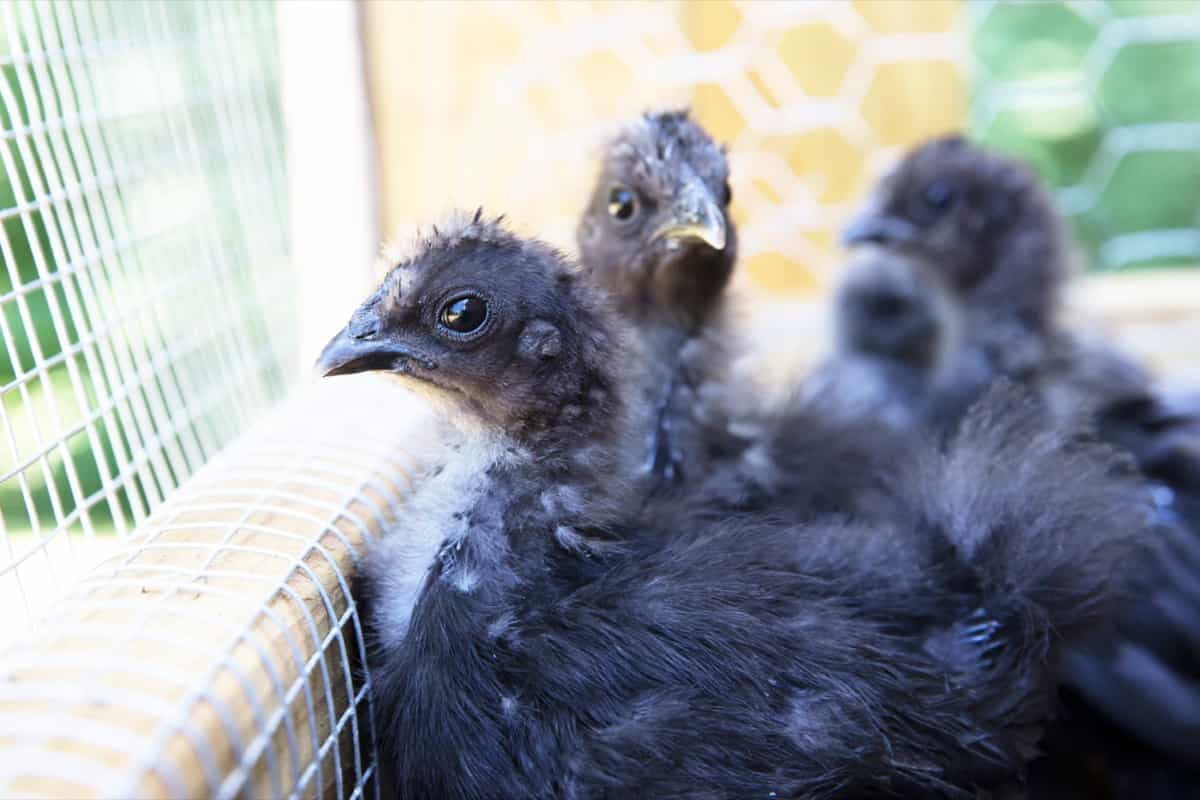
Design Considerations for Silkie Chickens
When designing a coop for Silkie chickens, prioritize features such as low perches to accommodate their feathered feet and adequate ventilation to prevent respiratory issues. Additionally, ensure the coop is predator-proof to safeguard against potential threats.
Bedding and Insulation for Comfort
Provide ample bedding, such as straw or shavings, to keep Silkie chickens comfortable and warm. Insulating the coop can help regulate temperature fluctuations, ensuring a cozy environment year-round.
Feeding Silkies
Silkie chickens require a balanced diet consisting of high-quality poultry feed supplemented with fresh fruits, vegetables, and grains. Ensure access to clean water at all times to support hydration and digestion.
Nutritional Requirements
Silkie chickens have specific nutritional requirements to maintain optimal health and egg production. A diet with protein, vitamins, and minerals supports feather growth, immune function, and reproductive health.
Special Dietary Considerations
Consider dietary supplements such as calcium for eggshell formation and probiotics for gut health. Monitor feed intake to prevent obesity and adjust diet as needed based on age, activity level, and environmental conditions.
Watering Your Flock
Provide clean and accessible water sources to Silkie chickens at all times to prevent dehydration and support overall health. Regularly clean waterers to prevent bacterial contamination and algae growth.
Keeping Water Clean and Accessible
Regularly clean water containers to remove debris and prevent bacterial buildup. Position waterers at a height that is easily accessible to Silkie chickens, taking into account their low stature and feathered feet.
Preventing Water from Freezing in Winter
In colder climates, use heated waterers or implement strategies such as adding insulation or using heated bases to prevent water from freezing during winter months. Regularly check water sources to ensure accessibility.
Egg Production in Silkies
Silkie chickens are moderate egg layers, producing approximately three eggs per week on average. Egg production influenced by factors such as age, diet, and environmental conditions.
- They lay about 100 to 120 eggs per year, or about three eggs per week on average.
- They usually start laying at around six months of age, but this may vary depending on the season, diet, and health of the bird.
- They are very broody and will often stop laying to sit on their eggs or those of other birds.
Understanding Silkie Egg Laying Patterns
Silkie chickens typically lay eggs in the morning hours, with peak production occurring in the spring and summer months. Monitor nesting boxes regularly to collect eggs promptly and prevent broodiness.
Collecting and Storing Silkie Eggs
Collect eggs daily to maintain freshness and prevent them from being damaged or soiled. Store eggs in a cool, dry location away from direct sunlight to prolong shelf life.
In case you missed it: How to Raise Wyandotte Chickens: A Profitable Wyandotte Farming for Beginners
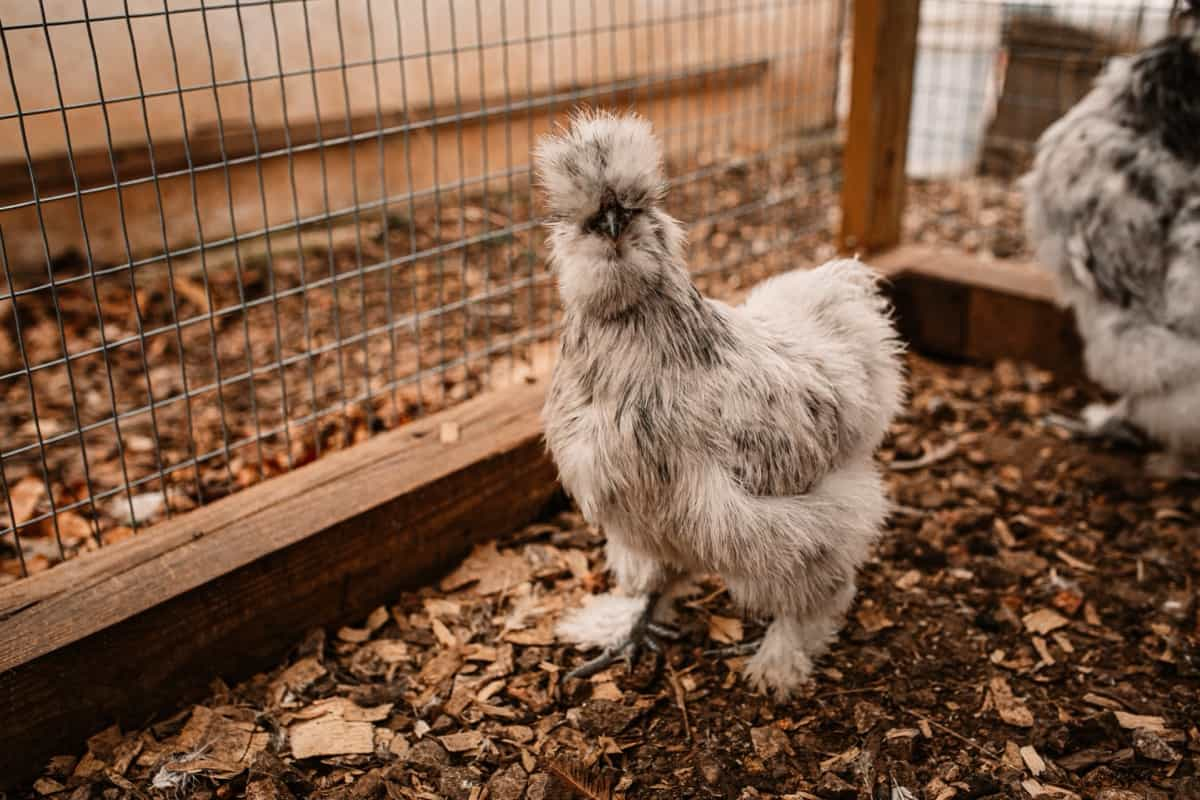
Health Care for Silkies
Regular health checks and preventive measures are crucial for ensuring the well-being of Silkie chickens. Monitor for signs of or distress and promptly address any health concerns. Some common health issues include respiratory infections, coccidiosis, worms, mites, lice, scaly leg mites, bumblefoot, fungal infections, Marek’s disease, and Newcastle disease.
Common Health Issues and Prevention
Silkie chickens are susceptible to common poultry ailments such as respiratory infections, parasites, and injuries. Implement biosecurity measures, maintain cleanliness, and provide appropriate veterinary care to prevent and manage health issues.
Routine Health Checks and Vaccinations
Schedule regular health checks with a poultry veterinarian and follow recommended vaccination protocols to protect against infectious diseases such as Marek’s disease and Newcastle disease.
Breeding Silkie Chickens
Breeding Silkie chickens requires careful selection of breeding pairs to maintain desired traits and genetic diversity within the flock. Proper incubation and brooding techniques are essential for successful hatching and chick rearing.
Selecting Breeding Pairs
Choose breeding pairs based on desired traits such as feather color, body conformation, and temperament. Avoid breeding birds with genetic defects or health issues to maintain a healthy breeding stock.
Caring for Eggs and Incubation Techniques
Collect eggs regularly and store them in a cool, humid environment before incubation. Use a reliable incubator with proper temperature and humidity control to ensure successful hatching.
Rearing Silkie Chicks
Provide a warm and secure brooder environment for newly hatched Silkie chicks, with access to food, water, and heat sources. Monitor chick development closely and address any issues promptly.
Silkie chicks should be fed a high-protein starter feed first eight weeks, then switched to a grower feed until they reach maturity at around six months.
- Silkie chicks should be vaccinated for Marek’s disease and checked for signs of coccidiosis, parasites, and other illnesses.
- Silkie chicks should be handled gently and socialized with humans and other chickens from an early age.
- Integrating Silkies with Other Chickens
- Silkies are very docile and friendly, but larger or more aggressive breeds may bully them.
Brooder Setup and Requirements
Set up a brooder with appropriate bedding, heat lamps, and draft protection to create a comfortable environment for Silkie chicks. Provide space for chicks to move freely and access feed and water easily.
In case you missed it: Ultimate Guide to Raising Brahma Chickens: Care, Feeding, Egg Production, and Breeding
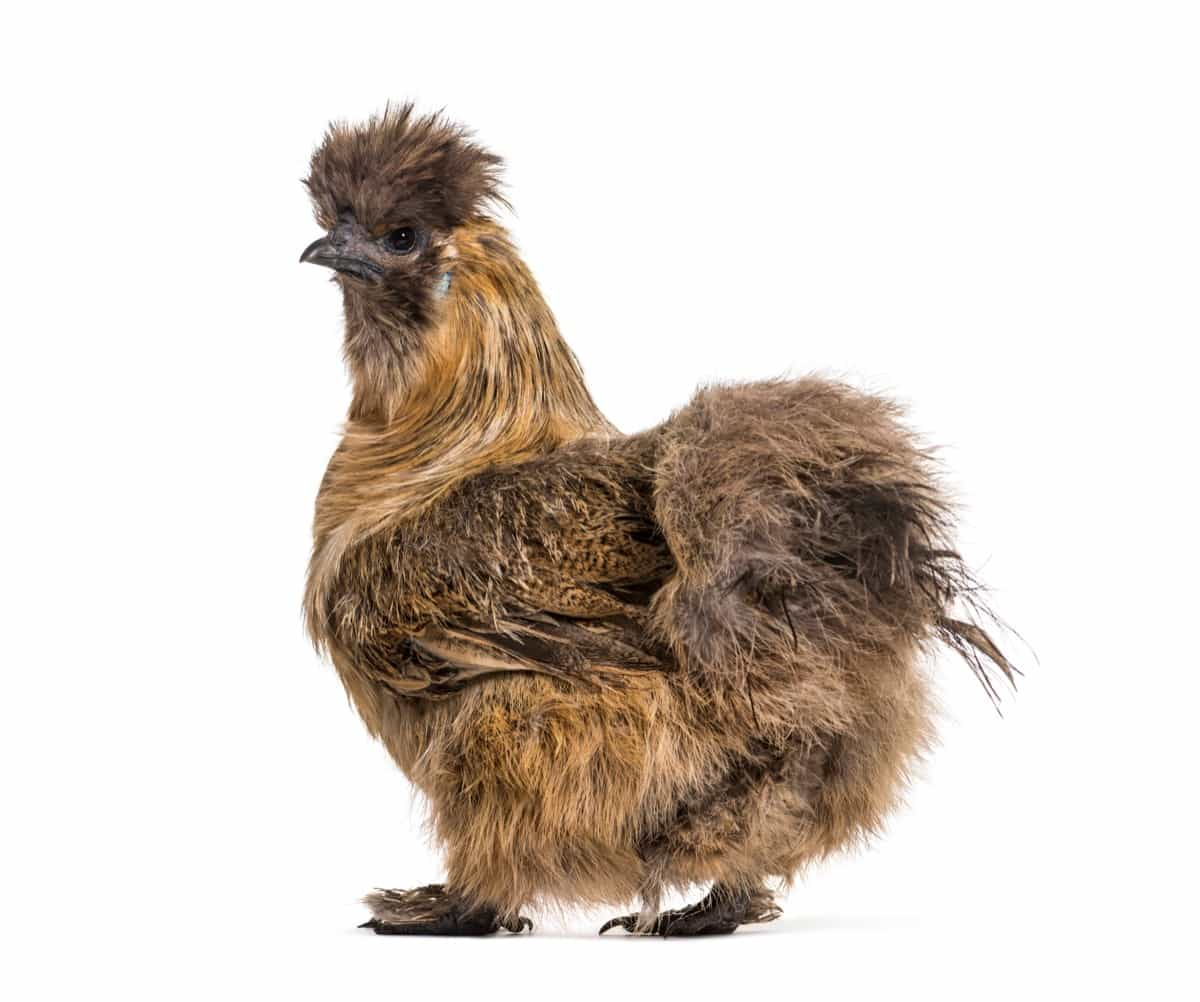
Monitoring Growth and Development
Monitor Silkie chicks’ growth and development, adjusting feed and environmental conditions as needed to support healthy growth. Provide opportunities for socialization and exercise to promote overall well-being.
Integrating Silkies with Other Chickens
Integrating Silkie chickens into mixed flocks requires careful planning and consideration of social dynamics. Introduce new birds gradually and monitor interactions to prevent aggression and ensure a smooth transition.
Social Dynamics in Mixed Flocks
Silkie chickens generally get along well with other breeds, thanks to their gentle nature. However, monitor flock dynamics closely to prevent bullying or aggression, especially during the integration process.
Tips for Successful Integration
Provide ample space and resources for all flock members, including multiple feeding and watering stations. Supervise interactions between birds and intervene if necessary to prevent conflicts.
Grooming and Care
Regular grooming is essential for maintaining Silkie chickens’ feather health and overall appearance. Trim nails and beaks as needed to prevent overgrowth and discomfort.
Maintaining Silkie Feather Health
Silkie feathers require special care to prevent matting and tangling. Regularly bathe and fluff feathers to keep them clean and free from debris.
Nail and Beak Trimming
Trim Silkie chickens’ nails and beaks regularly to prevent injuries and maintain comfort. Use sharp, clean clippers and exercise caution to avoid cutting too close to the quick.
Seasonal Considerations
Adjust care practices for Silkie chickens based on seasonal changes in weather and environmental conditions. Provide additional warmth and protection during cold winters and implement cooling measures during hot summers. Silkies are cold-hardy and can tolerate low temperatures as long as they have a dry and draft-free coop with adequate ventilation.
- Silkies should have plenty of bedding material, such as straw or wood shavings, to keep them warm and comfortable.
- Silkies should have access to fresh water that does not freeze in winter.
- Silkies may need extra protection from predators such as hawks, foxes, or raccoons in winter when there is less cover available.
Protecting Silkies from Extreme Weather
Provide shelter from weather conditions like rain, wind, and snow to protect Silkie chickens from discomfort and stress. Insulate coops and provide extra bedding during colder months.
Adjusting Care for Summer and Winter
During summer months, provide shade, adequate ventilation, and access to cool water to prevent heat stress in Silkie chickens. In winter, insulate coops, use heat sources as needed, and provide extra bedding to keep birds warm.
Pest and Parasite Management
Implement regular pest and parasite control measures to protect Silkie chickens from common pests such as mites, lice, and worms. Monitor birds for signs of infestation and treat them promptly as needed.
In case you missed it: Ultimate Guide to Raising Leghorn Chickens: Feeding, Breeding, Egg Production, and Care
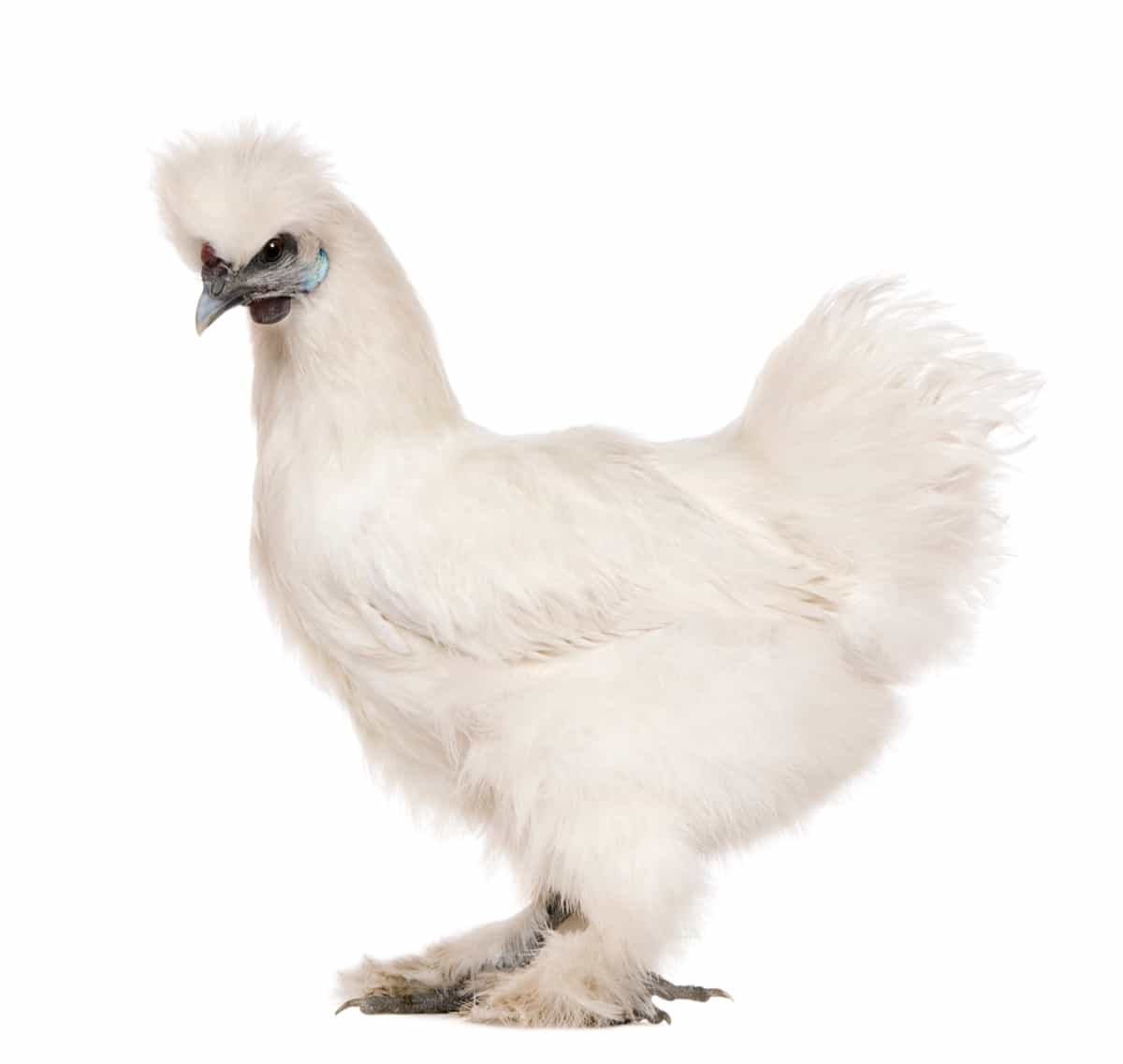
Identifying and Treating Common Pests
Regularly inspect Silkie chickens for signs of pest infestation, including feather loss, irritation, and abnormal behavior. Treat affected birds with appropriate medications and take measures to prevent re-infestation.
Preventative Measures and Treatments
Practice good biosecurity measures to prevent the spread of pests and parasites. Use poultry-safe insecticides, dewormers, and repellents as part of a comprehensive pest management plan.
Behavior and Handling
Understanding Silkie chicken behavior is essential for proper care and handling. Learn to recognize common behaviors and cues to promote positive interactions and minimize stress.
Understanding Silkie Behaviors
Silkie chickens exhibit a range of behaviors, including foraging, dust bathing, and roosting. Pay attention to their body language and vocalizations to gauge their mood and well-being.
Tips for Handling and Socialization
Handle Silkie chickens gently and confidently to build trust and positive associations. Spend time interacting with birds regularly to promote socialization and bonding.
Diet Adjustments for Optimal Health
Tailor Silkie chickens’ diet to meet their nutritional needs at different life stages, including chickhood, pullet development, and adult maintenance. Provide a balanced diet with protein, vitamins, and minerals to support overall health and vitality.
Tailoring Nutrition for Life Stages
Adjust feeding practices based on Silkie chickens’ age, activity level, and reproductive status. Offer starter feeds for chicks, grower feeds for pullets, and layer feeds for mature hens. Supplement with treats and fresh foods for variety and enrichment.
Supplementing for Feather Health
Incorporate dietary supplements such as omega-3 fatty acids and biotin to promote healthy feather growth and luster in Silkie chickens. Provide access to grit and oyster shells for calcium and mineral supplementation.
Enhancing Egg Production
Maximize egg production in Silkie chickens by providing optimal nutrition, lighting, and environmental conditions. Implement strategies to address factors such as age, genetics, and seasonal influences affecting egg laying.
- Silkies are fair egg layers, producing about three eggs per week or 100 to 120 eggs per year.
- Silkies lay small to medium-sized eggs that are cream or tinted in color.
- Silkies may stop laying eggs during the winter months or when they go broody.
- Silkies can be encouraged to lay more eggs by providing them with enough light, warmth, space, food, and water.
Strategies to Increase Egg Yield
Encourage consistent egg laying in Silkie chickens by providing a stress-free environment, adequate nesting boxes, and supplemental lighting during shorter daylight hours. Monitor egg production closely and adjust management practices as needed.
Addressing Factors Affecting Egg Laying
Identify and address potential factors affecting egg production, such as nutritional deficiencies, stress, or health issues. Consult with a poultry veterinarian for guidance on optimizing egg yield and overall flock health.
In case you missed it: 45 Days Chicken Business Plan: Revenue, Costs, and Profitability Analysis
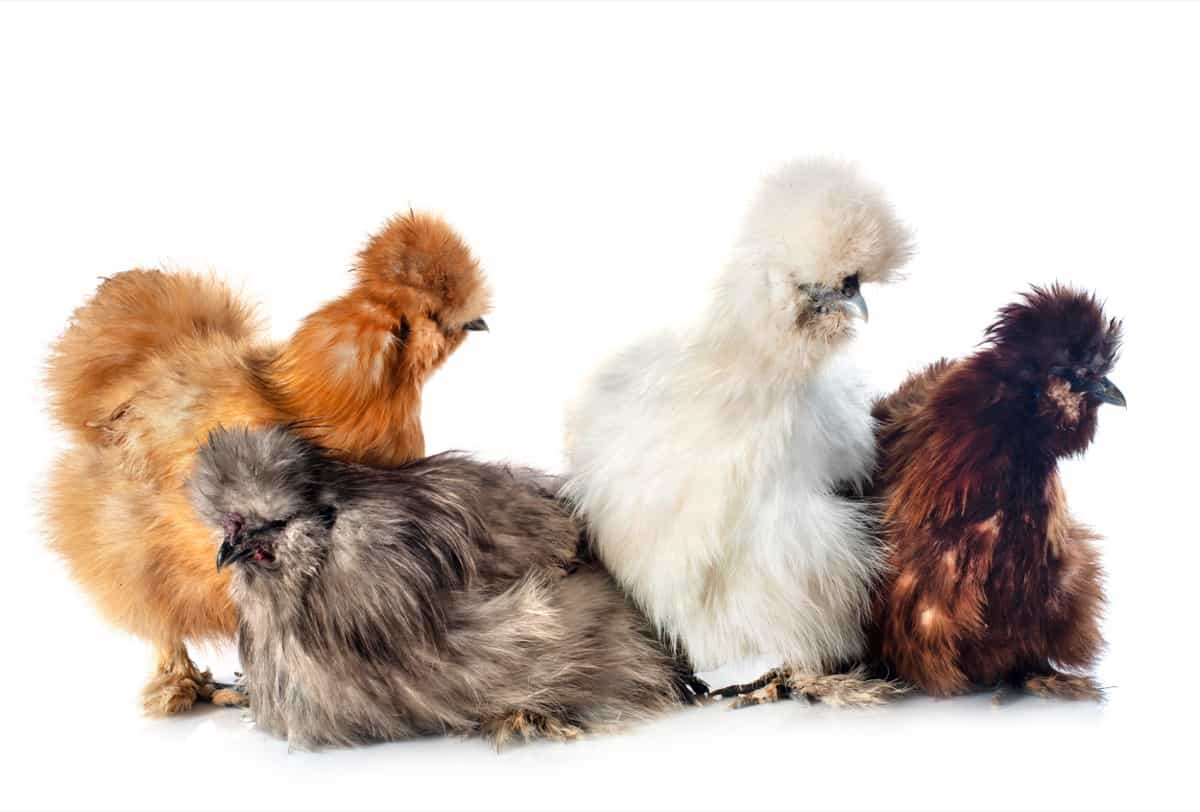
Conclusion
Raising Silkie chickens is a rewarding endeavor that requires attention to detail and care. By understanding their unique characteristics, providing proper nutrition, and maintaining a comfortable environment, you can enjoy the companionship of these charming birds while reaping the benefits of their delightful eggs.
- Types of Pesticides Used in Agriculture: A Beginner’s Guide
- Economical Aquaculture: A Guide to Low-Budget Fish Farming
- 15 Common Planting Errors That Can Doom Your Fruit Trees
- How to Make Houseplants Bushy: Effective Tips and Ideas
- Innovative Strategies for Boosting Coconut Pollination and Yield
- Pollination Strategies for Maximum Pumpkin Yield
- The Complete Guide to Chicken Fattening: Strategies for Maximum Growth
- Natural Solutions for Tulip Problems: 100% Effective Remedies for Leaf and Bulb-Related Issues
- Revolutionizing Citrus Preservation: Towards a Healthier, Greener Future
- Natural Solutions for Peony Leaf and Flower Problems: 100% Effective Remedies
- Maximizing Profits with Avocado Contract Farming in India: A Comprehensive Guide
- Natural Solutions for Hydrangea Problems: 100% Effective Remedies for Leaf and Flowers
- The Ultimate Guide to Choosing the Perfect Foliage Friend: Bringing Life Indoors
- From Sunlight to Sustainability: 15 Ways to Use Solar Technology in Agriculture
- The Ultimate Guide to Dong Tao Chicken: Exploring from History to Raising
- The Eco-Friendly Makeover: How to Convert Your Unused Swimming Pool into a Fish Pond
- Mastering the Art of Delaware Chicken Farming: Essentials for Healthy Backyard Flocks
- 20 Best Homemade Fertilizers for Money Plant: DIY Recipes and Application Methods
- How to Craft a Comprehensive Free-Range Chicken Farming Business Plan
- Brighten Your Flock: Raising Easter Egger Chickens for Beauty and Bounty
- How to Optimize Your Poultry Egg Farm Business Plan with These Strategies
- Subsidy for Spirulina Cultivation: How Indian Government Schemes Encouraging Spirulina Farmers
- Ultimate Guide to Raising Dominique Chickens: Breeding, Feeding, Egg-Production, and Care
- Mastering the Art of Raising Jersey Giant Chickens: Care, Feeding, and More
- Ultimate Guide to Raising Legbar Chickens: Breeding, Farming Practices, Diet, Egg-Production
- How to Raise Welsummer Chickens: A Comprehensive Guide for Beginners
- How to Protect Indoor Plants in Winter: A Comprehensive Guide
- Ultimate Guide to Grow Bag Gardening: Tips, Tricks, and Planting Ideas for Urban Gardeners
- Guide to Lotus Cultivation: How to Propagate, Plant, Grow, Care, Cost, and Profit
- Agriculture Drone Subsidy Scheme: Government Kisan Subsidy, License, and How to Apply Online
- Ultimate Guide to Raising Araucana Chickens: Breed Profile, Farming Economics, Diet, and Care
- Bringing Hydroponics to Classroom: Importance, Benefits of Learning for School Students
- Ultimate Guide to Raising Polish Chickens: Breed Profile, Farming Economics, Diet, and Care
- Ultimate Guide to Raising Australorp Chickens: Profile, Farming Economics, Egg Production, Diet, and Care
- Silkie Chicken Farming: Raising Practices, Varieties, Egg Production, Diet, and Care
- Sussex Chicken Farming: Raising Practices, Varieties, Egg Production, Diet and Care